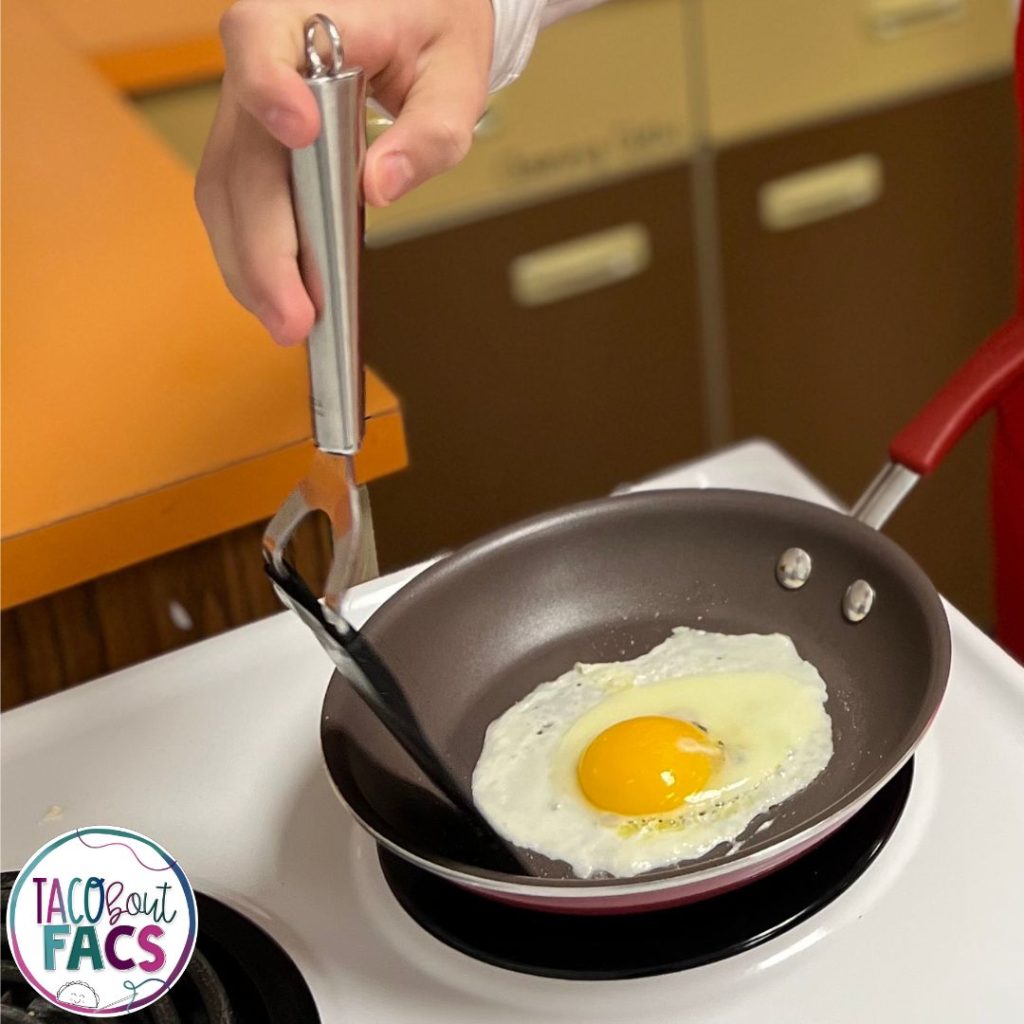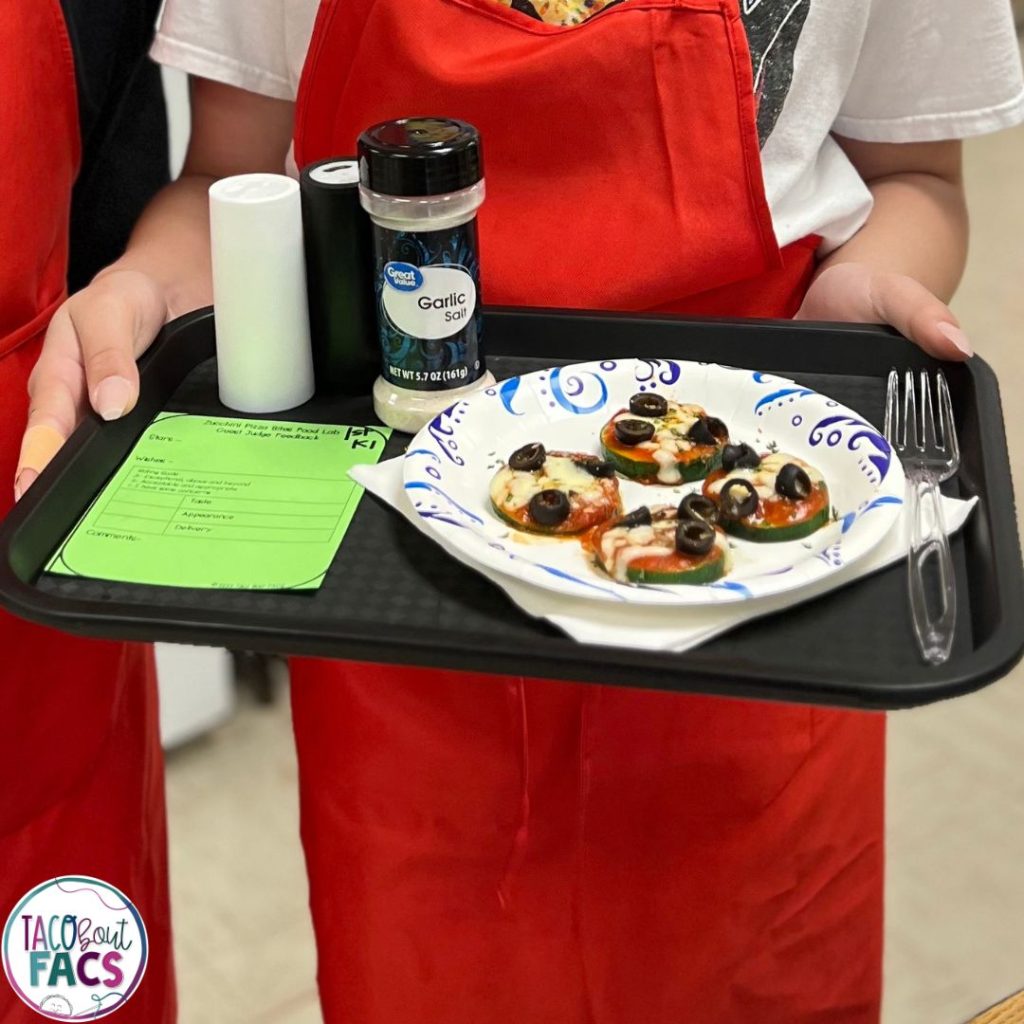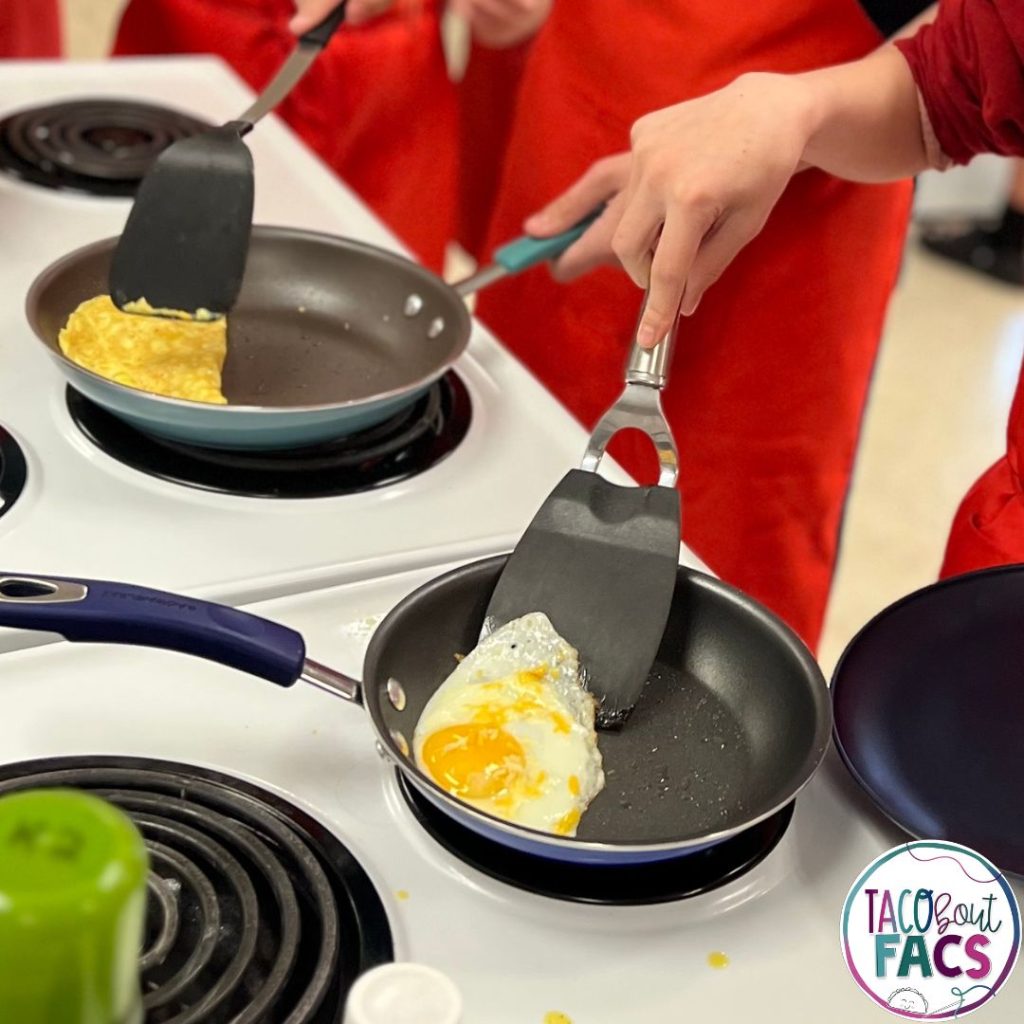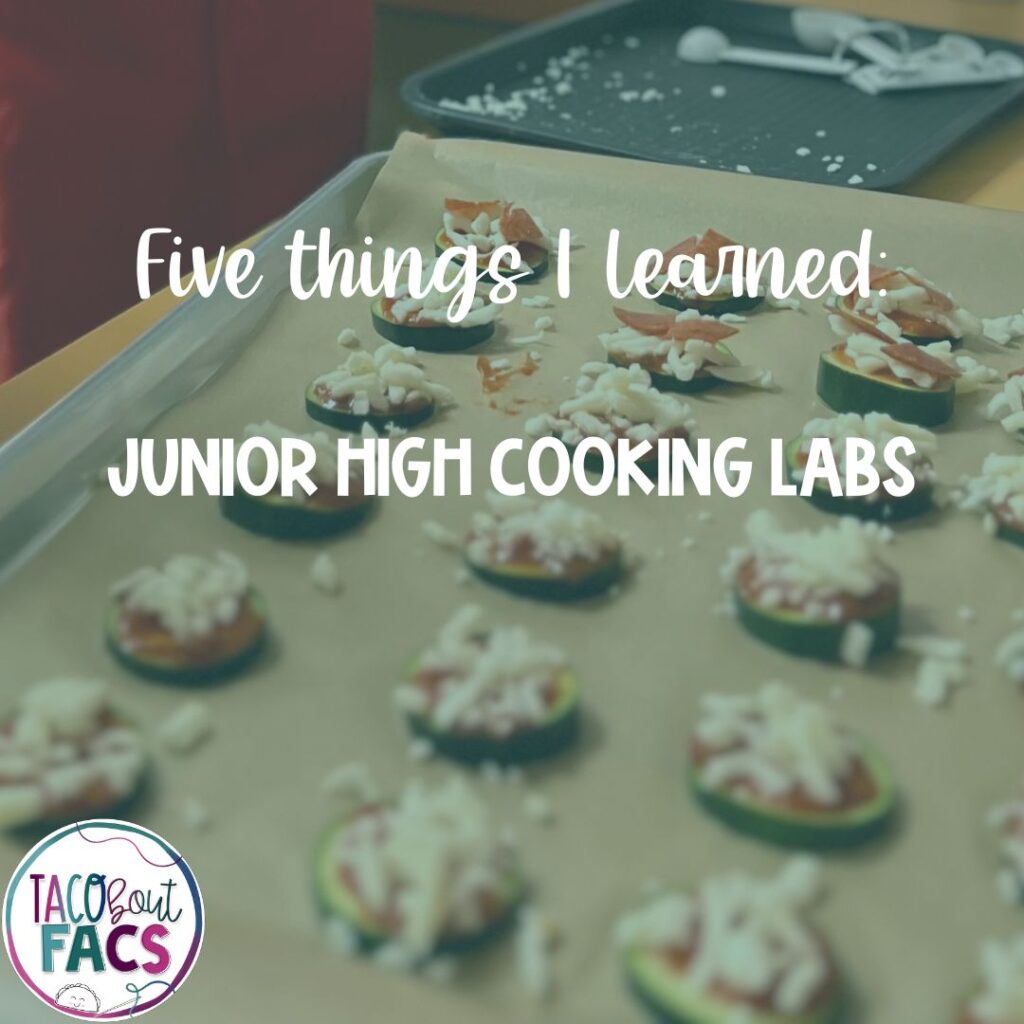Junior High culinary arts cooking labs in the Family and Consumer Science classroom can be a bit of chaos. Here are 5 things I have learned from food labs with 7th and 8th-grade students.
1. Be prepared
I firmly believe it is better to spend more time before cooking and going over specifics. Determine what you want a cooking lab day to look like and sound like ahead of time. For my 49-minute classes, I do not have time to take attendance before the lab. Students drop off their bags, grab their group lab plan (completed on the day before the lab), and then an apron, hat/hair tie/hair net, and wash their hands.
For the omelet lab, students chop the ingredients the day before the lab. One semester I had students prepare the brown butter for the Gluten Free Brown Butter Oatmeal Chocolate Chip Cookies the day before, but then decided it would be fine to complete in the same day during a different semester with block scheduling.

One way I better prepare students for time management is by breaking down what a 49-minute class looks like for the specific lab. The first lab my students complete is the omelet lab. We discuss that it will likely take them a bit longer to learn the kitchen, so roughly 10-15 minutes to clean, 3-5 minutes per omelet, and 7-8 omelets per kitchen. That is roughly 25 minutes, 10 or so minutes to get out ingredients and equipment, and that is already 45 minutes! Sometimes it takes a cooking lab or two for students to realize there isn’t time to piddle around.
I am willing to write a tardy pass for students who are actively engaged in cooking and cleaning. However, for students who either enter the kitchen less than well-prepared, waste time doing TikTok dances (do they even realize they are doing this?), or not actively helping to clean up, they are expected to take a tardy to the next hour. It’s a natural consequence and usually only takes one time during the semester to realize I hold firm to my expectations.
2. Be specific
Be specific in the food lab plan about who has what job, who wants what ingredients (if it’s a lab with optional ingredients like omelets, zucchini pizza bites, etc), where equipment is found in the kitchen, and who will complete what job in the specific order.

This might annoy some students and I send them back to add more information if it’s not specific enough. Why? Sometimes students are gone and their job needs to be covered. Some students have very little cooking experience. Some don’t work well with others and need to know what is expected of them in the lab. Some don’t understand time management well enough to stay focused. I also use a 3. Give them jobs
My classes are split into four kitchens, which usually means I have 7 in a kitchen. That’s a lot in a tiny space! For this reason, I must make sure that each person is intentional and has a job. There are natural leaders in the kitchen. They possess confidence either because they are a natural leader or because they spend time in the kitchen at home. There are also some 7th and 8th-grade students who enter the kitchen for the first time in my classroom. They need a specific direction for what is expected. They might be a bit more timid during the lab as well. Before any cooking lab, we discuss the 7 jobs in the kitchen and their roles. What it looks and sounds like before the lab, during, and after the lab. These roles are also posted in each kitchen for students to reference. Maybe you’re wondering if that is too much to have it posted in the kitchen, but junior high kids are notorious for losing their minds and acting a fool on occasion. This is one extra step I can make sure they have a place to reference information and likely one less thing they need to ask me. I’d rather set them up for success than stand around not knowing what to do. The day after the lab, I make all students complete a reflection form. I do this for a few reasons. The first reason is because I previously taught elementary and 8th grade English so I know how important it is for students to practice writing complete sentences, to reflect, and to write across subjects. I also have them write a reflection because this allows them to tell me about their accomplishments and anyone in their group they feel didn’t pull their weight. If they make a complaint during the lab about someone, I always remind them they can tell me all about it tomorrow during the reflection. It usually helps motivate the other student. Reflections are kept confidential and I never reveal what someone said about someone else unless there was a specific positive moment they wrote about. Sometimes it is a good thing to know someone viewed you as a leader and kept the group on track. I have tried group grades, but I find it unfair. Sometimes you have a great student who gets grouped with someone who doesn’t look at grades the same. Now I have a 27-point rubric I use on a 3-2-1 scale. I list students by kitchen group. This is how I take attendance once they start cooking, plus it allows me time to make comments and mark an individual student accordingly. You can grab my scoring guide for free, here. Food lab days are long and tiring! I know that and prepare accordingly. I make sure to prep my students as much as possible beforehand. When we are in the kitchen, I know it will be crazy with back-to-back classes, but that’s how it works. I find it easier than switching days and certain hours are one day versus the next. Go with the flow, take a few deep breaths, and enjoy watching your students learn and practice new culinary art skills. 4. Make them reflect

5. Individual grades
To sum it up

